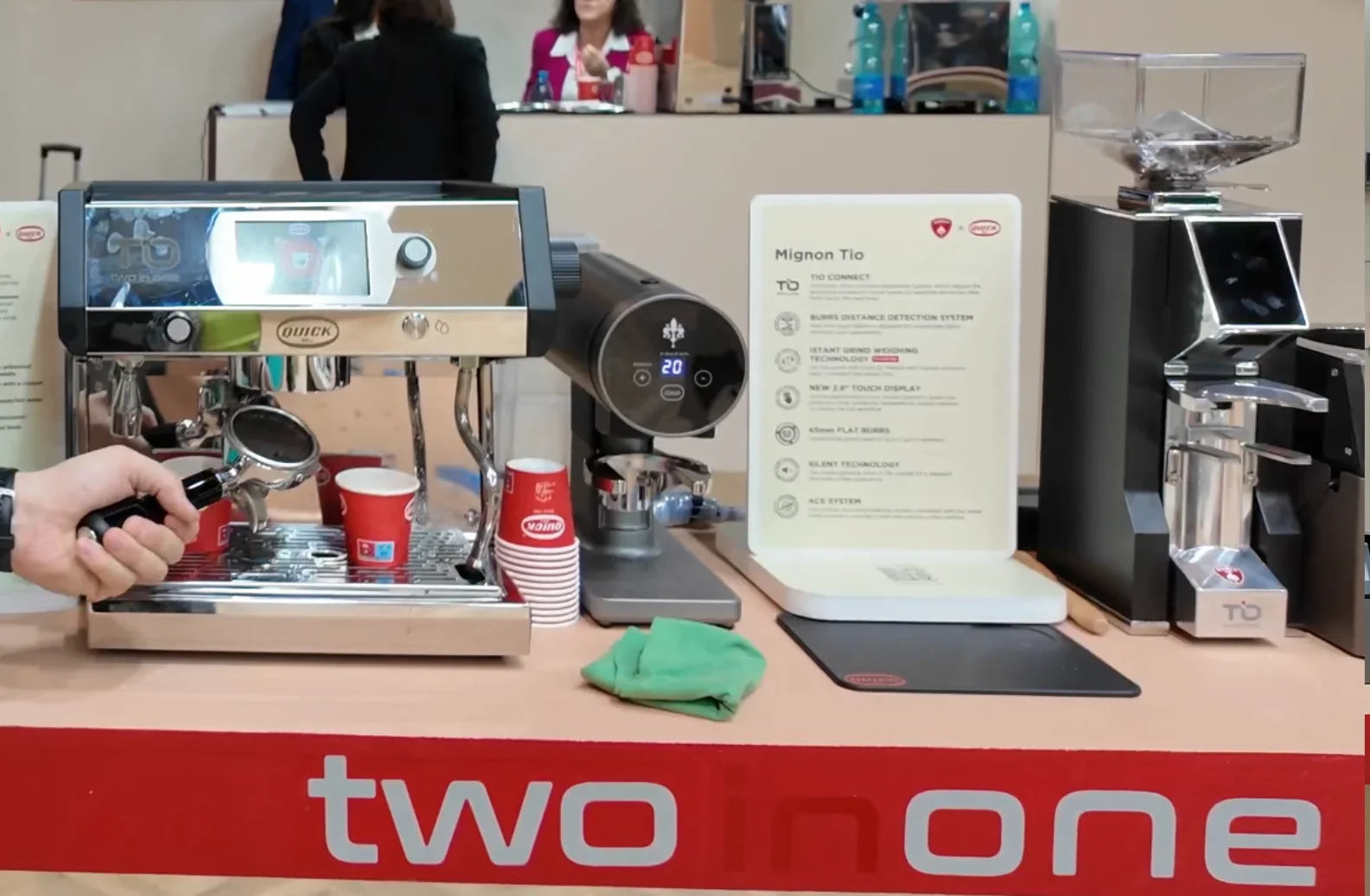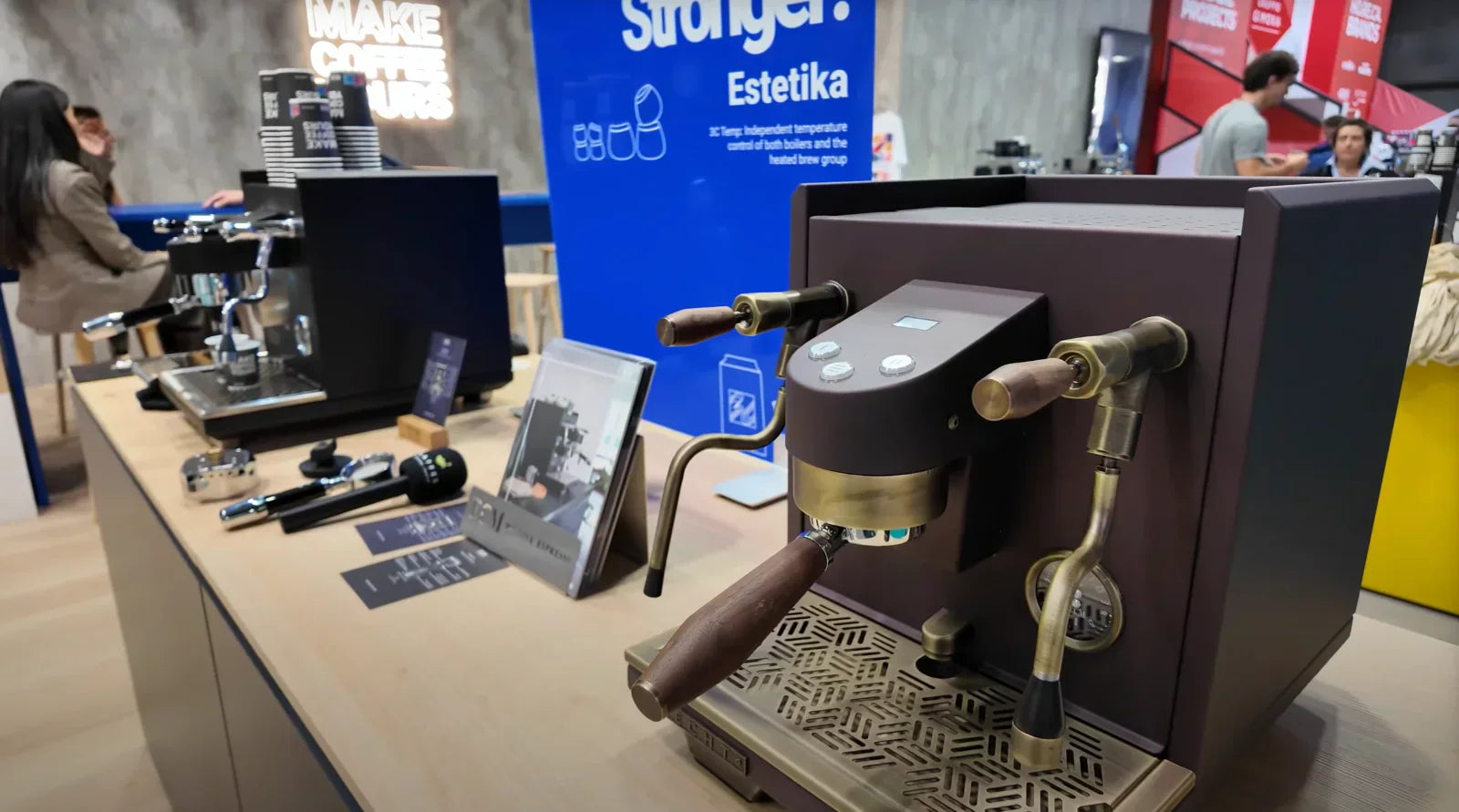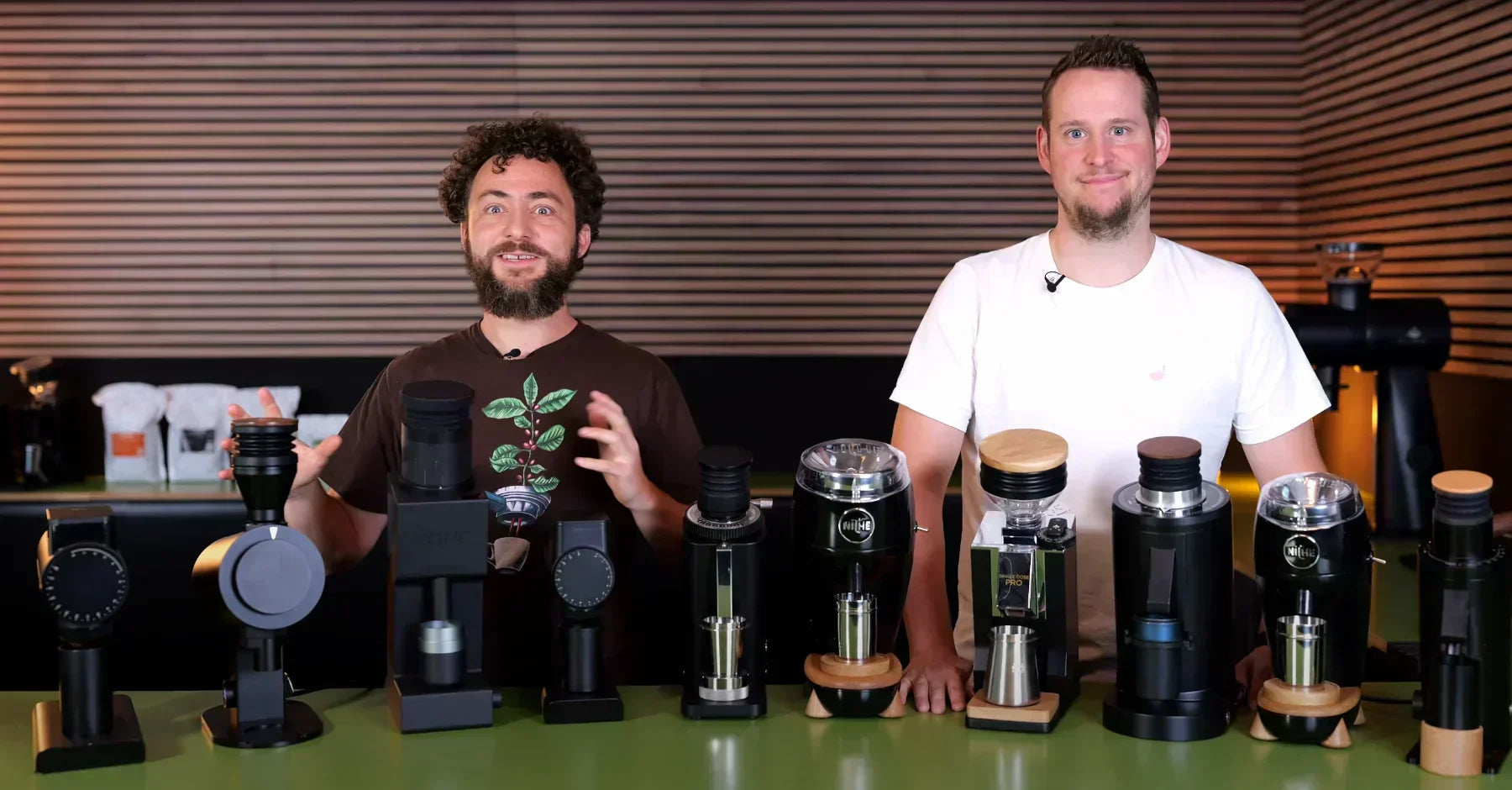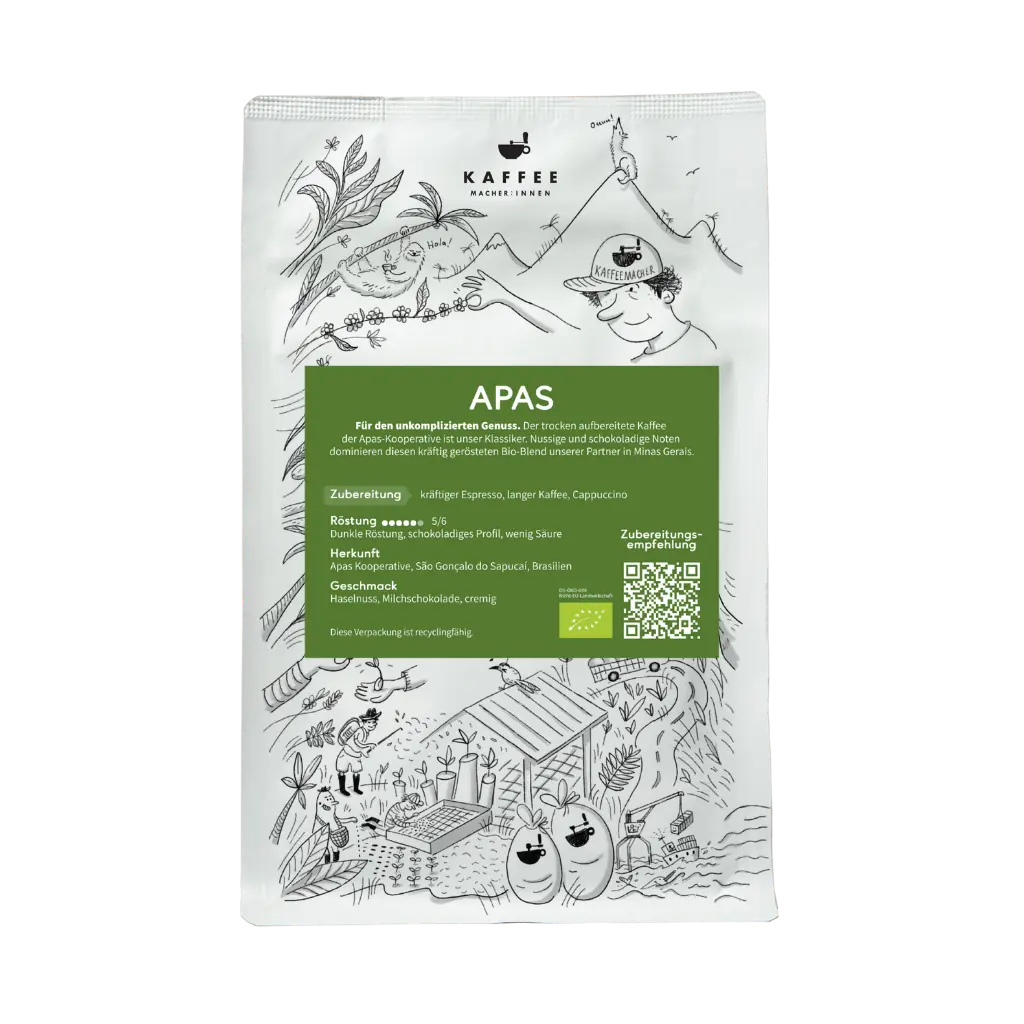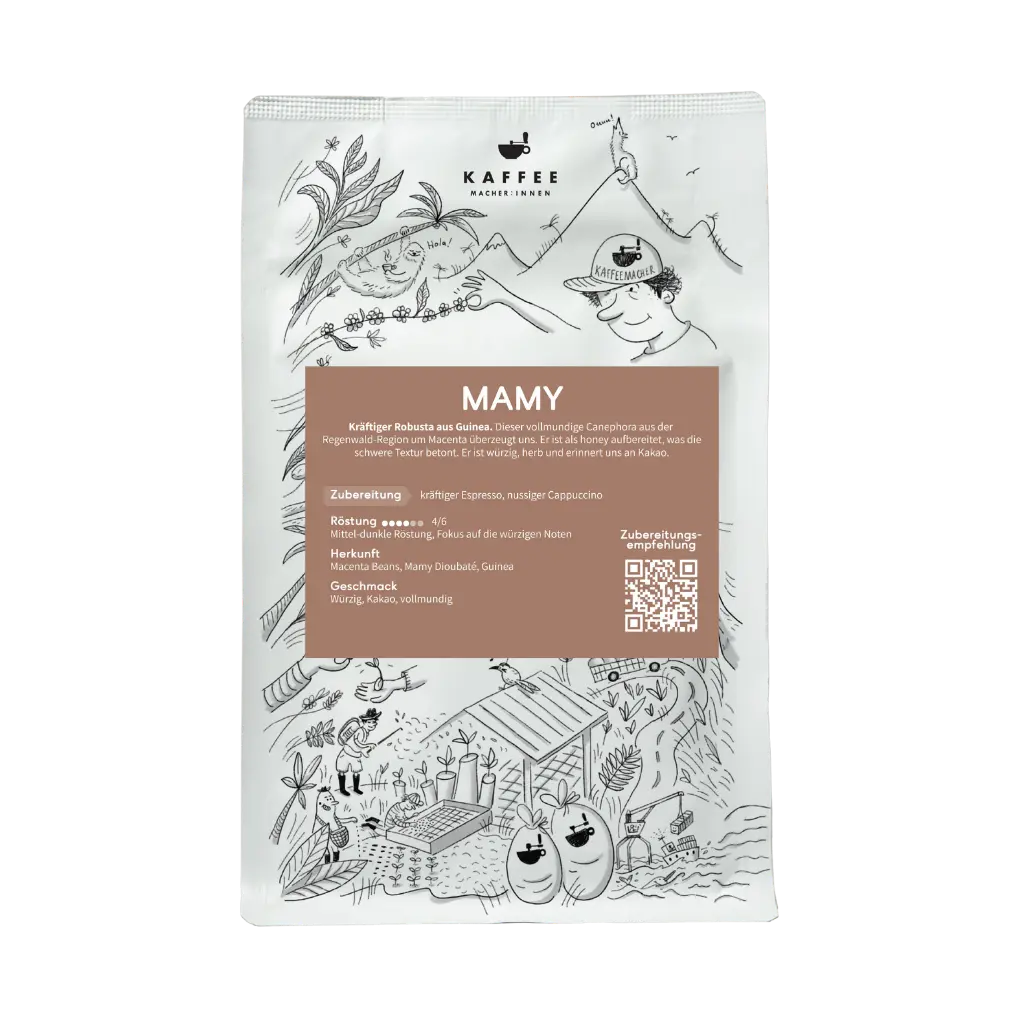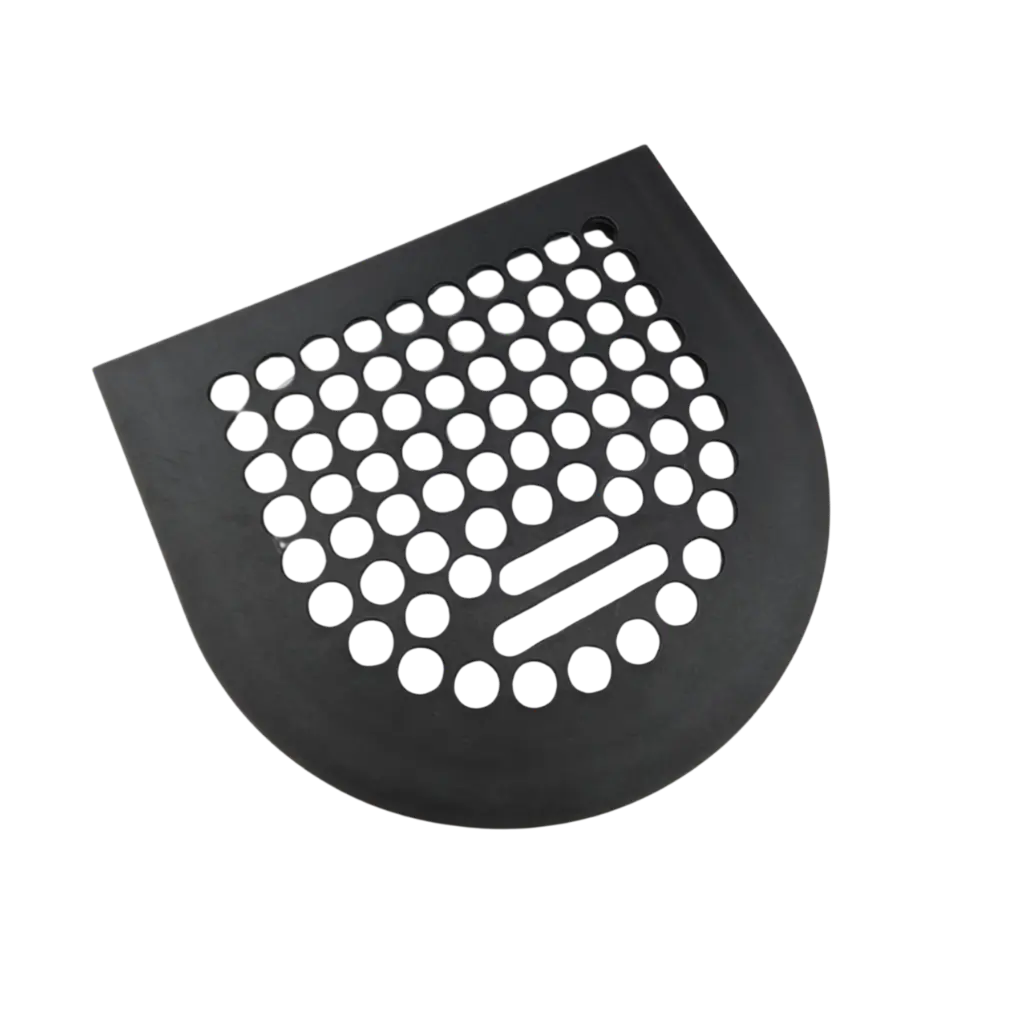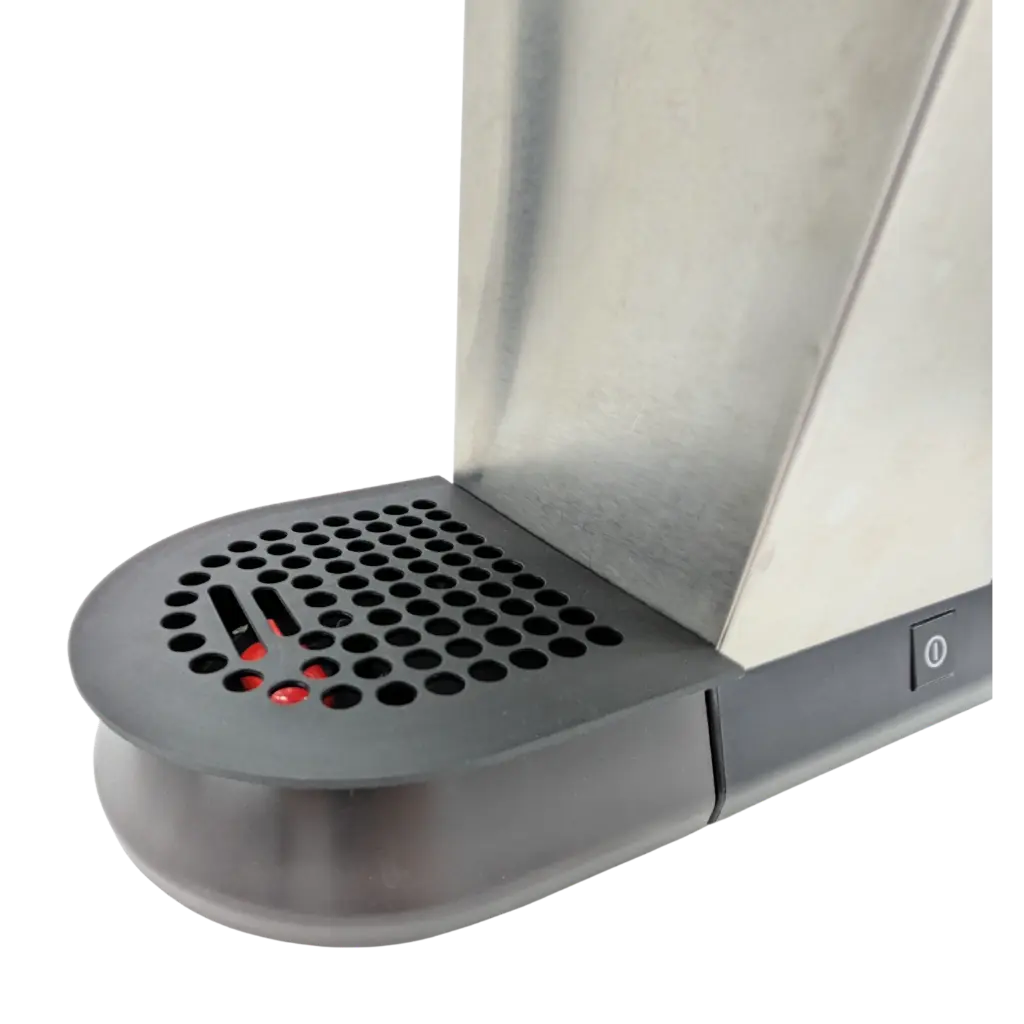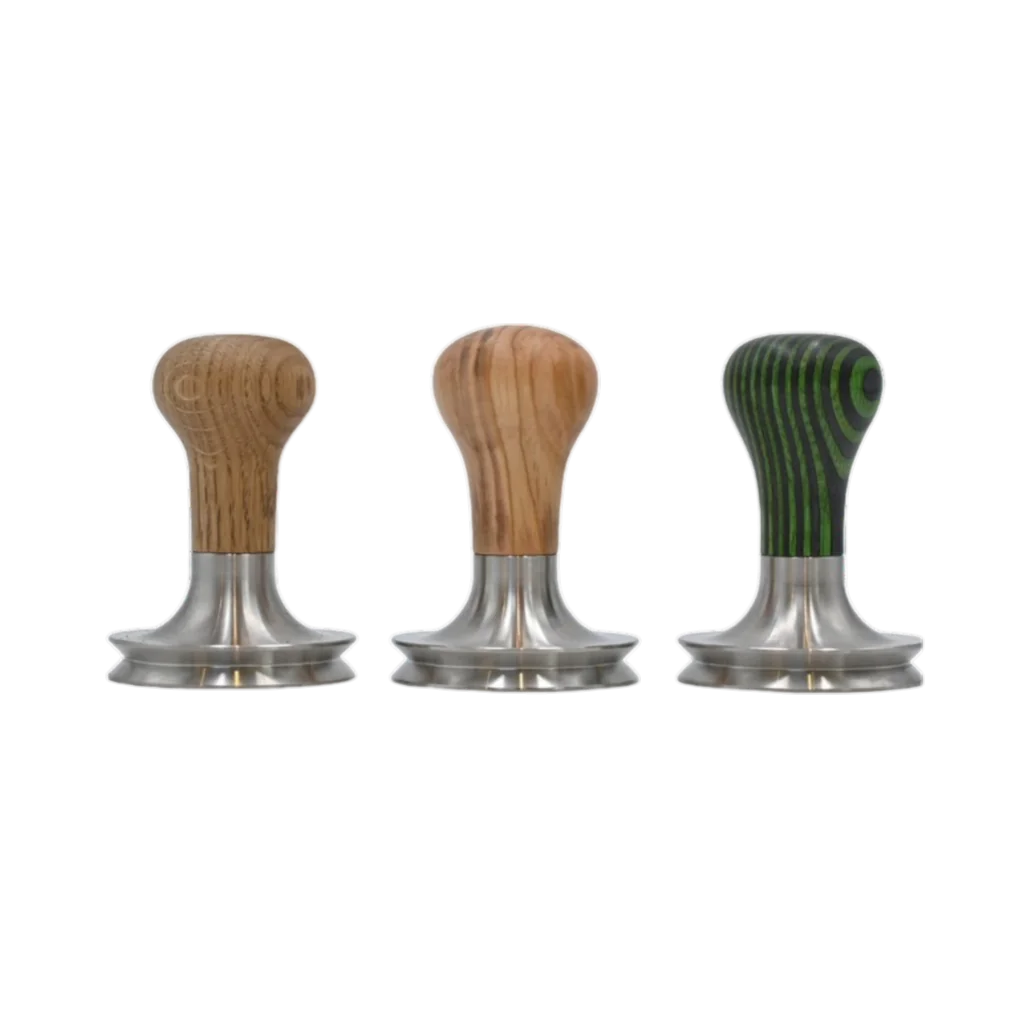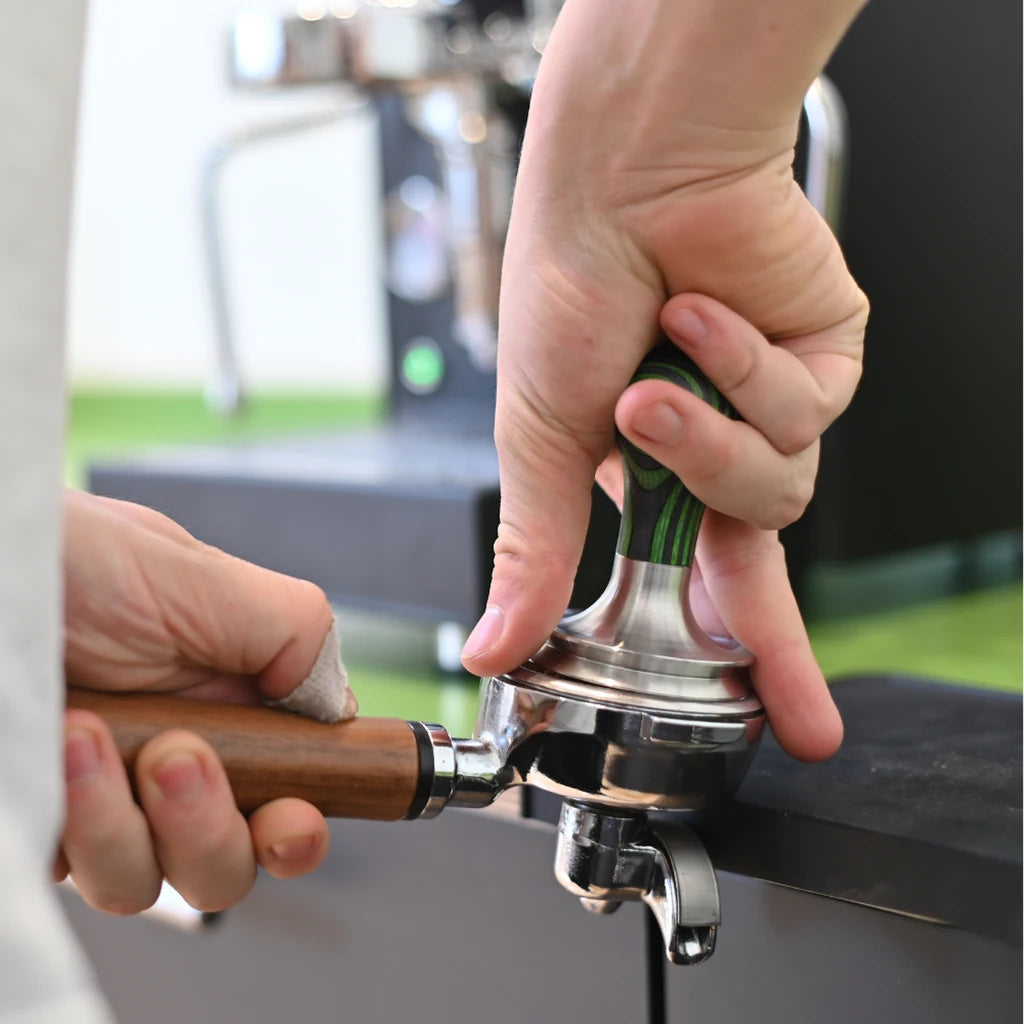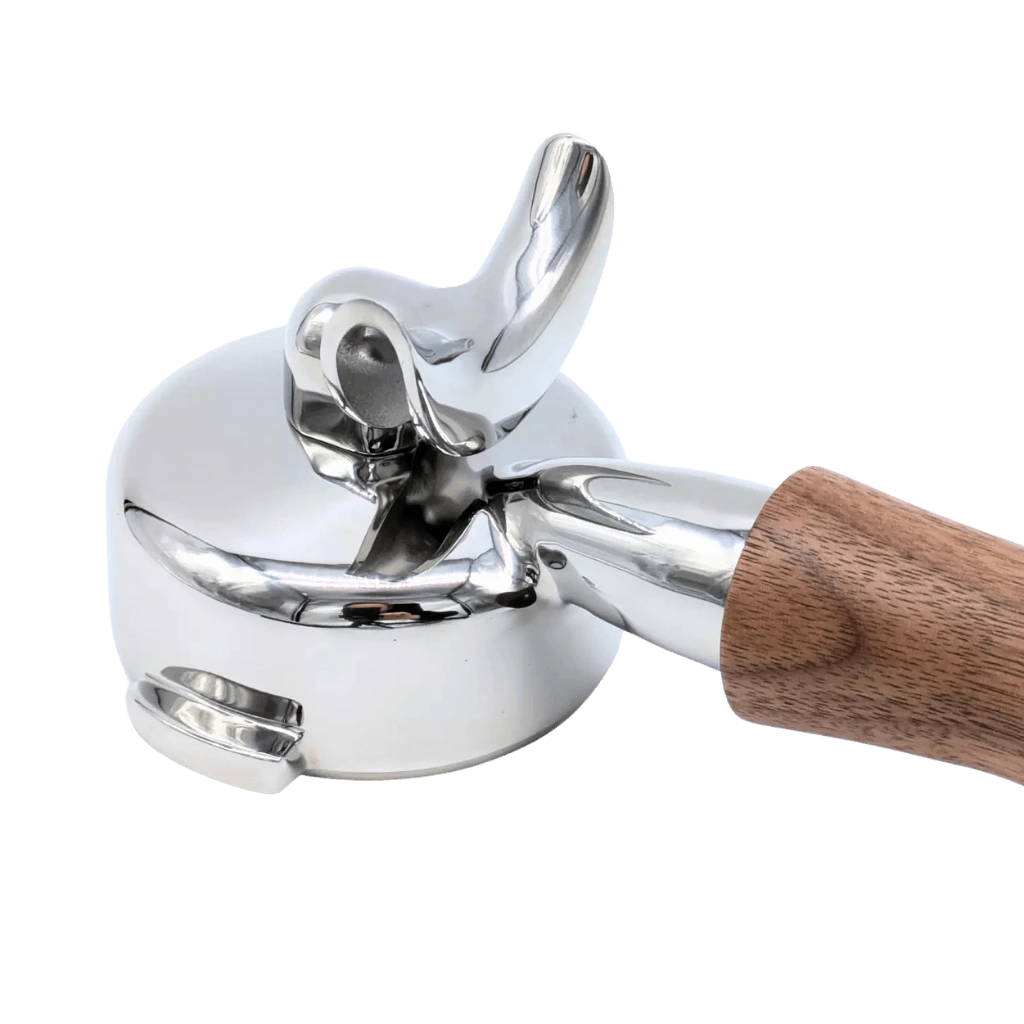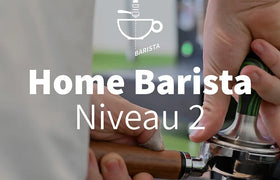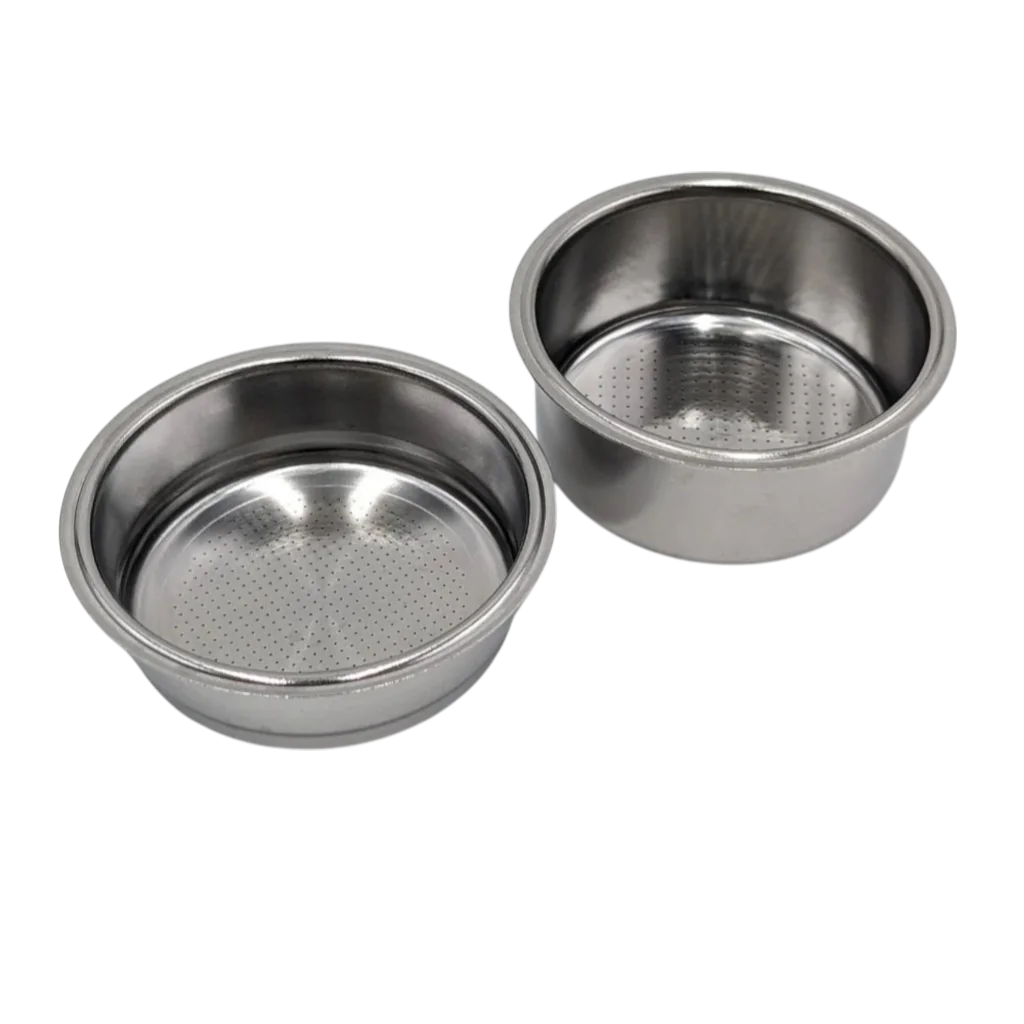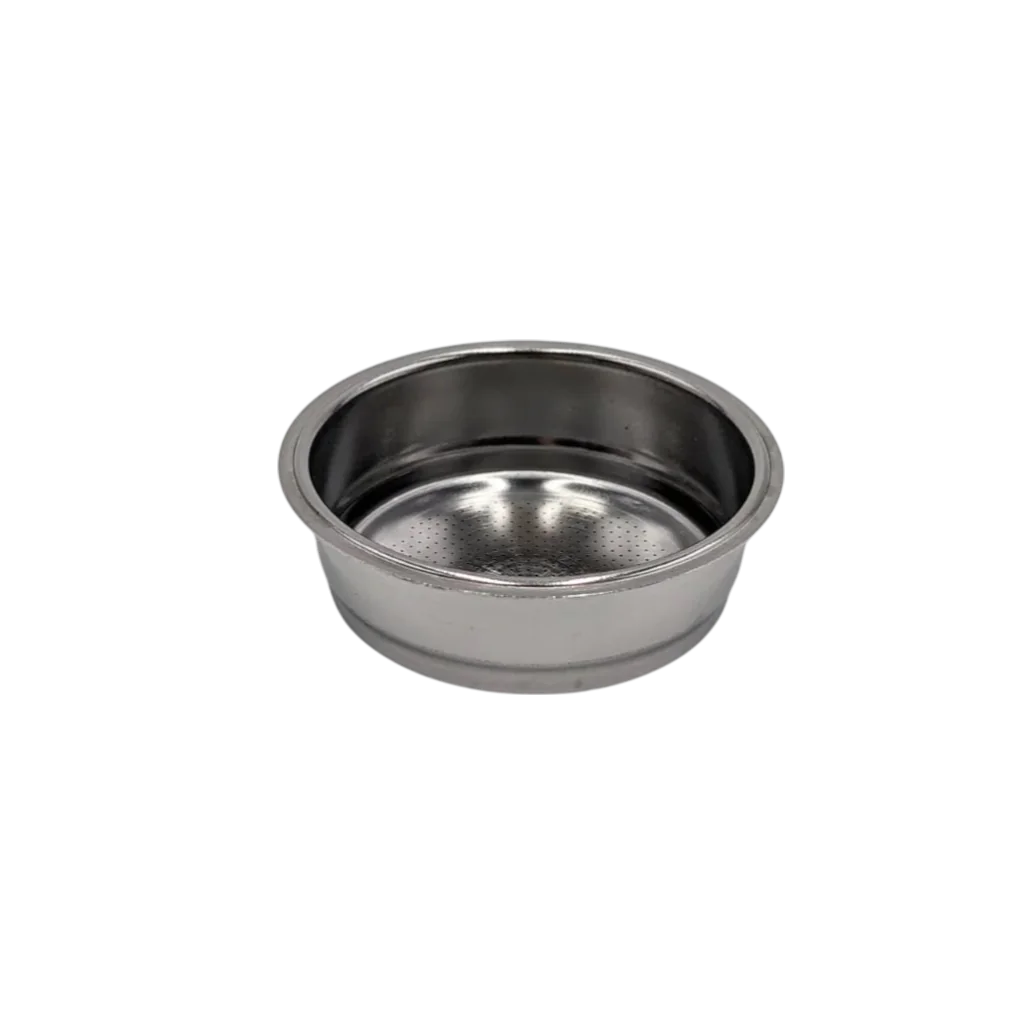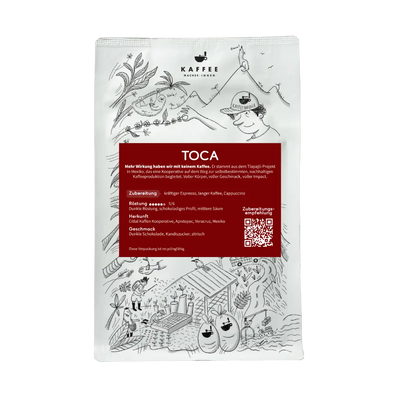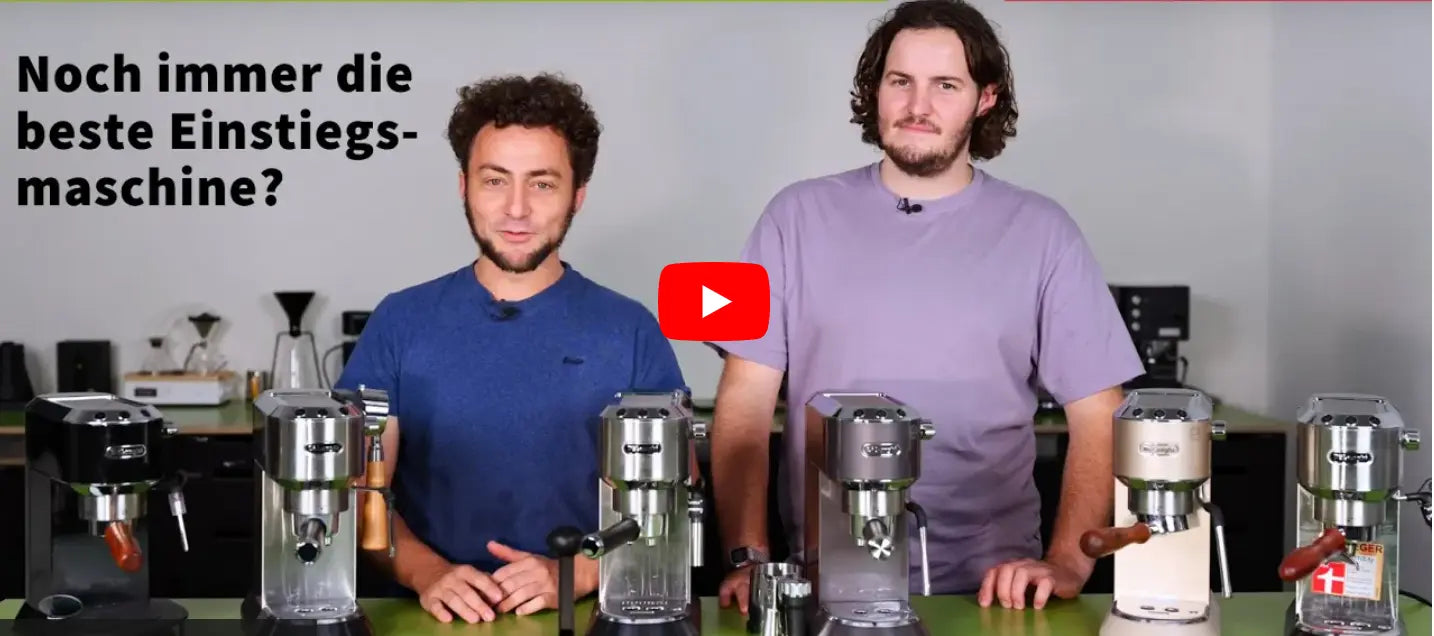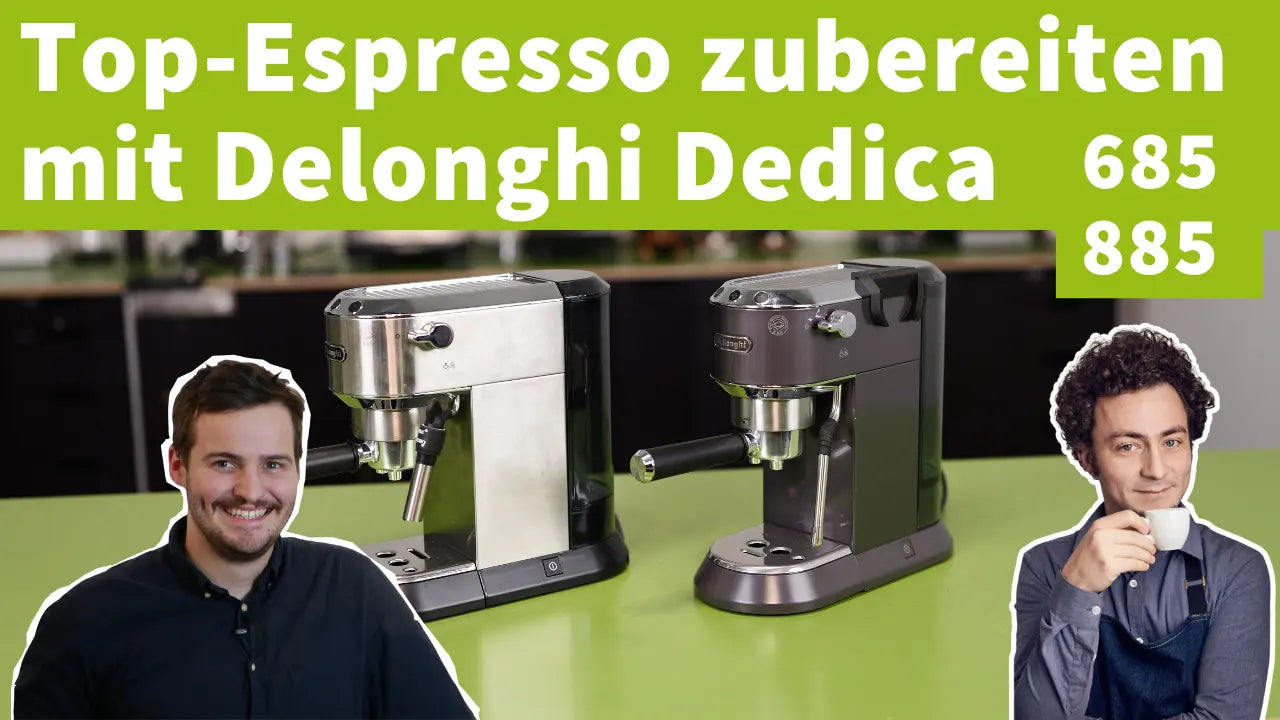A pointer to the future of espresso machines
The Ascaso Steel Duo PID is a thermoblock espresso machine that sets standards. It combines high temperature stability with a short heating phase and yet has relatively low power consumption for an espresso machine. The combination of these features left a lasting impression on our testers Michel Aeschbacher (Vice Barista Champion in Switzerland) and Benjamin Hohlmann (German Cup Tasting Champion).
The Ascaso Steel Duo PID was tested as part of our Thermoblock test series . After an extensive series of tests with dual-circuit espresso machines , we are publishing another espresso machine test week after week.
UPDATE: The Ascaso Steel Duo PID was revised in 2022. We tested the espresso machine again and summarized the changes in a video and article . You can find the short blog article about the latest version of the Ascaso Steel Duo PID here .
First impression of the Ascaso Steel Duo PID
The espresso machine aficionados of the coffee makers are in a common WhatsApp group. There we share machine impressions, draw our attention to outstanding espressos or interesting content. This is also where test results are summarized in short, concise words. Michel's comment after the first measurement of the Ascaso Steel Duo PID was simply "crazy". Attached was the following screenshot of the first measurement of the temperature curve of the Ascaso Steel Duo Pid. Felix's answer: "That's pretty cool."
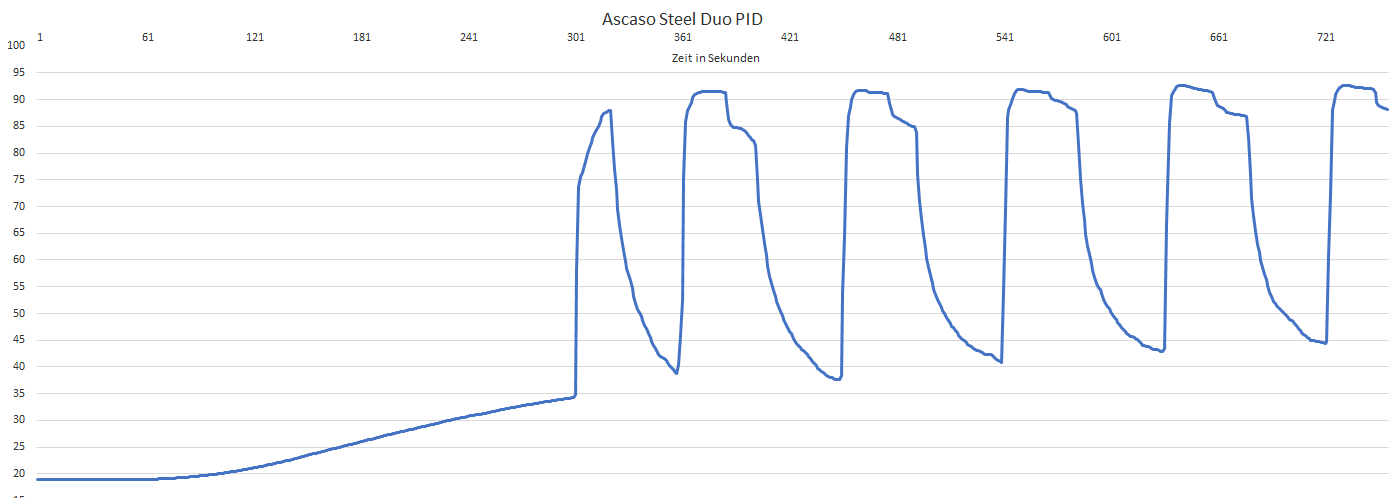
This actually sums up a lot of what we will explain below. First of all: there are a lot of improvements we would like to see from the Ascaso Steel Duo PID. Nevertheless, in many ways it is also an indication of the direction in which future espresso machines can go. Namely in the direction of thermoblocks or smaller boilers, in the direction of saving energy and heating up quickly. All of these are really strong arguments for an espresso machine for home use.
In summary the strengths and weaknesses
Strengthen
- Temperature consistency from reference to reference and over multiple extractions
- Heating speed (3 minutes)
- power consumption
- Espresso quality (can be increased with simple upgrades)
- High-quality portafilter with wooden handle
- Control (volumetric, display)
- Side water tank
weaknesses
- Workmanship, especially inside
- Milk foam power
- Warming up of the machine
- Construction of the cup base
- Accessories (tampers, sieves)
The thermoblock duo of the Ascaso Steel PID
Two thermoblocks give the Ascaso Steel Duo PID its name. One of these two thermoblocks brings the brewing water to temperature. The temperature of this block can be easily adjusted using a PID control via a display on the front of the espresso machine. A second thermoblock is responsible for preparing the milk. In both cases, water is given through a spirally rolled stainless steel tube, which lies in an aluminum block. The thermoblock responsible for the brewing water sits directly above the portafilter and ensures that the portafilter is warmed up thoroughly. This makes Ascaso significantly better than other thermoblocks we have tested so far. They constantly struggle with the fact that the temperature of the portafilter is too cold. This automatically leads to a cooling of the brewing temperature during brewing, as temperature is lost to the portafilter. With the Ascaso Steel Duo PID, we were able to measure temperatures of 89 - 92 degrees in the portafilter even when it was idle.
The heating time of the thermoblock duo is not spectacular in itself. As with all other thermoblocks, the machine signals readiness for operation very quickly (after 3 minutes). The speed only becomes really exciting when the Ascaso Steel Duo PID is actually ready for operation - in the best sense of the word.
Temperature stability – Catalan Champions League
When it comes to brewing temperature, the Ascaso company delivers what makes a thermoblock a hard to beat technology for heating the brewing water to prepare espresso: consistency at its finest. The Asacso Steel Duo PID competes with every dual-circuit espresso machine we have looked at, both during the reference and from reference to reference. The brewing temperature slides like a line and the temperature change over 5 double brews in 5 minutes is only one degree. This is Champions League quality that the Barcelona company, founded in 1962, brings to the brewing group. And to stay with football examples: the further development of some boiler machines over the last few years seems as pomadic as European football, when from 2008 to 2012 the Spanish national team and FC Barcelona under Pep Guardiola used a new type of tiki-taka. Football descended on them.
Now it has to be said: Thermoblocks are of course nothing new when it comes to heating brewing water. Filter coffee machines have emitted the sound of Thermoblock water since time immemorial. What is new or newer is that the temperature from the thermoblocks of the Ascaso Steel Duo PID is delivered at the temperature we want thanks to intelligent temperature control. A good espresso can be prepared at temperatures between 92 and 94 degrees ( log file of the measurement ).

Boiler versus thermoblock
When it comes to making espresso at home, there are few arguments in favor of a boiler espresso machine if a thermoblock performs like the brewing thermoblock of the Ascaso Steel Duo PID does. Boiler and kettle machines include single-circuit, dual-circuit and dual-boiler espresso machines.
- The temperature is at least as constant as the temperature of the better two-circuit espresso machines we examined
- the machine is at full operating temperature within approx. 3 minutes (while dual-circuit espresso machines need 20 minutes or more)
- The machine has a significantly low energy consumption (see next point), even if you don't switch it off, which is certainly possible because it heats up again in a short time.
- In addition, there is no water in the boiler. Fresh water is supplied to prepare the espresso.
- A lower tendency to calcification is another pro argument for a thermoblock.
The following speaks for a boiler:
- Better milk foam behavior, both in terms of power and continuity of steam output.
- Proven tractor mentality in gastronomic settings.
We can't think of many other arguments in favor of a boiler when a thermoblock delivers like the Ascaso Steel Duo PID. Please help us if you find any more points!
Energy consumption
We tested the consumption in kilowatt hours after 5 minutes and then 5 espresso doppio brews. We used an adapter from MyStrom.ch for this. The measurement indicated a consumption of 0.09 kWh.
After another two hours we performed another extraction of a double espresso. Now the consumption was 0.28 kWh.
The second value can be compared with the consumption of dual-circuit espresso machines. We also measured this after two hours. The Xenia Espresso recorded the lowest consumption with 0.48 kWh and the Bezzera BZ10 with 0.48 kWh. The Bezzera Magica S came last with 0.72 kWh.
It should also be noted here that due to the short heating time, the Ascaso Steel Duo PID could also have been switched off. Then the value of consumption would have reduced again after two hours.

processing of the machine
One of the biggest criticisms of the machine is the workmanship. The exterior of the machine appears tinny, especially when you tap on the side walls or the base of the cup. If you compare that with a stainless steel car in the dual-circuit class in the same price range, then ECM, Rocket and co. the race.
The Ascaso Steel Duo PID counters this with one of the most beautiful portafilters in the standard scope of delivery. A wooden handle is an upgrade on many other machines, but it is already included here. Looking into the machine is not for those who love neat cable laying. Perhaps the tiki-taka tactic was at work here, but more to the detriment of the machine. Everything that is laid there seems a bit untidy. We have received feedback from Ascaso Steel Duo PID users that screws were not screwed in properly and cables were jammed. We couldn't confirm this, but we did find that the plastic cover had fallen off. Not serious, but still an indication that the same care was not taken here as when calibrating the machine.
The Ascaso Steel Duo PID is 27 cm wide, 31.5 cm deep and 36 cm high. The water tank is almost 2 liters and the machine weighs 15 kg.
From the outside, the Ascaso Steel Duo PID initially looks good. But if you take a closer look, you will find unpleasant side effects. The drip tray is actually made of plastic and only has a metal cover. The slope of the cup base ensures that the cups slide backwards due to the vibration during the extraction. Even if you initially place the cups away from each other, they end up snuggled up against the cover at the back of the footprint. The result is a cup-clinking orchestra that increases the volume.
In our opinion, the cup heater creates far too much temperature. We would recommend unplugging this from the inner connector. You don't need cups that warm. The machine still provides enough waste heat, at least when it is running for a longer period of time. If you only use the machine for a short time, then the heating obviously makes sense.
Espresso quality of the Ascaso Steel Duo PID
The barista is responsible for many steps on the way to the perfect espresso . Coffee to water ratio, the degree of grinding, good preparation of the coffee in the portafilter, distribution and tamping. Then comes the work of the espresso machine. What the Ascaso Steel Duo PID basically does here enables a perfect espresso. Constant brewing temperature and constant pressure are the fundamental factors for a good result.
And so we drank a lot of good espressos (our Dreispitz espresso , to be precise) and yet we improved the quality with two small interventions. On the one hand, we swapped the Ascaso Steel Duo PID shower for the IMS Competitions shower . This makes an incredible difference in distribution. This means that the water is distributed very homogeneously throughout the entire coffee. On the other hand, we replaced the sieves with these sieves from IMS (size 24.5). Their holes extend closer to the edge than those of the small sieves supplied, which hold just under 15 grams. In addition, with a capacity of a good 19 grams, they enable longer drinks to be served. This makes sense for both espresso and cappuccino.
We use several Ascaso Steel Duo PID's in our academies and have subjected all of them to this screen upgrade. Then the machine can also be used very well with our tamper .

Milk frothing is not a flagship discipline for the Ascaso Steel Duo PID
If you mainly drink mixed milk drinks, you are probably not perfectly equipped with the Ascaso Steel Duo PID. Because the milk foam performance cannot keep up with the foaming behavior of dual-circuit espresso machines in the same price range. The pressure built up by the second thermal block is too low. You can also foam a 600ml milk jug with the Ascaso Steel Duo PID, but this really takes a lot of practice and experience to pull and roll the milk at the same time (see also our latte art tutorial on our YouTube channel).
We recommend using a small 350ml milk jug . With a little practice, the milk foam will be successful. However, if cappuccinos and the like play a major role in your choice of drinks, then we would recommend a dual-circuit espresso machine.
Conclusion on the Ascaso Steel Duo PID
The Ascaso Steel Duo PID is an excellent espresso machine in many ways. Above all, the temperature stability stands out. The machine shows what is possible when it comes to thermoblocks. With such consistency, even across multiple references, the machine is a pointer to possible developments in the area of espresso machines for home use.
Many classic espresso machine manufacturers continue to rely on large boilers that have to be brought up to temperature and maintained. In theory, these are constant, although our two-circuit test also showed that this does not apply to all machines. However, one thing is certain: a lot of water has to be heated to make a few espressos a day. The Thermoblock proves that there are smarter solutions for this. If manufacturers like Ascaso or Decent prove in a higher price segment that the temperature can also be perfectly adjusted with thermoblocks, then we are excited to see how this becomes an inspiration for the market. We look forward to what else will happen here in the next few years.
Addendum: Availability and calibration
We do not sell the Ascaso Steel Duo PID in Germany.
We have consciously decided not to sell portafilter machines in Germany (as of December 2022).
We have received many messages asking whether we can also calibrate the machine. Unfortunately we cannot offer that.
